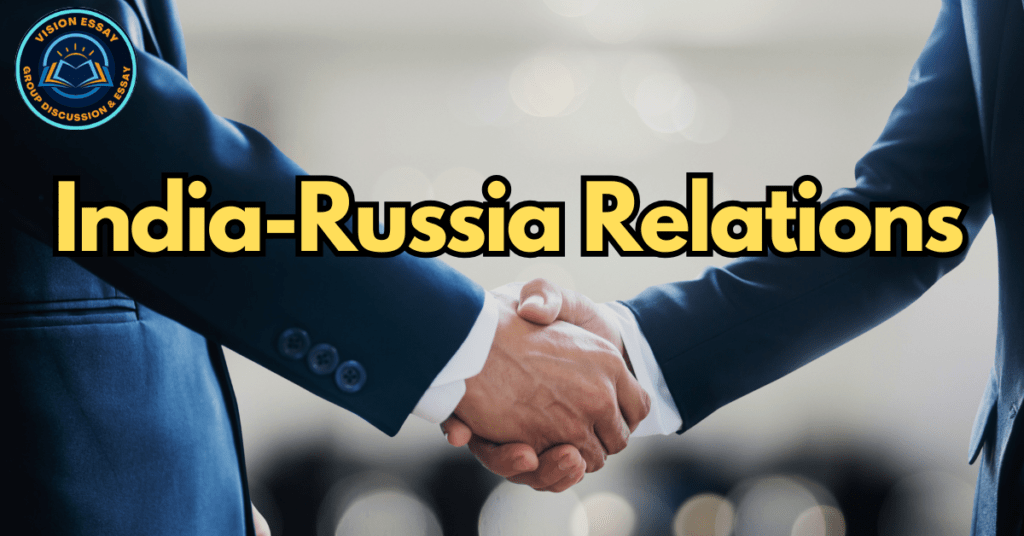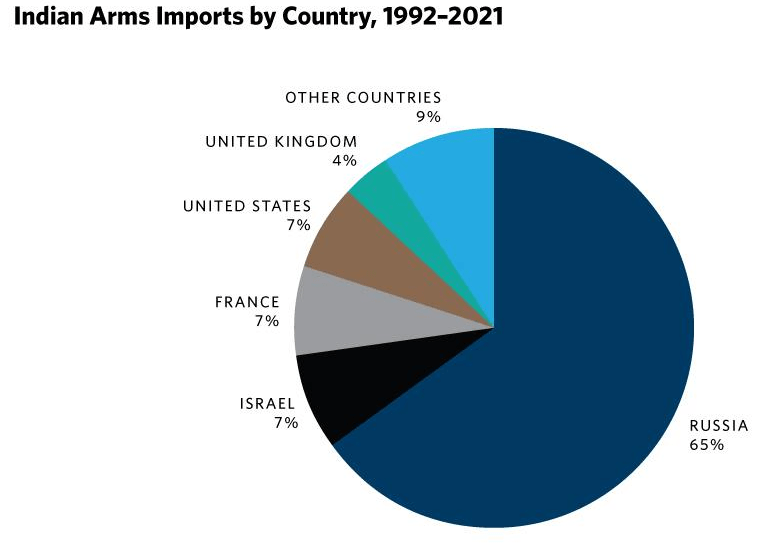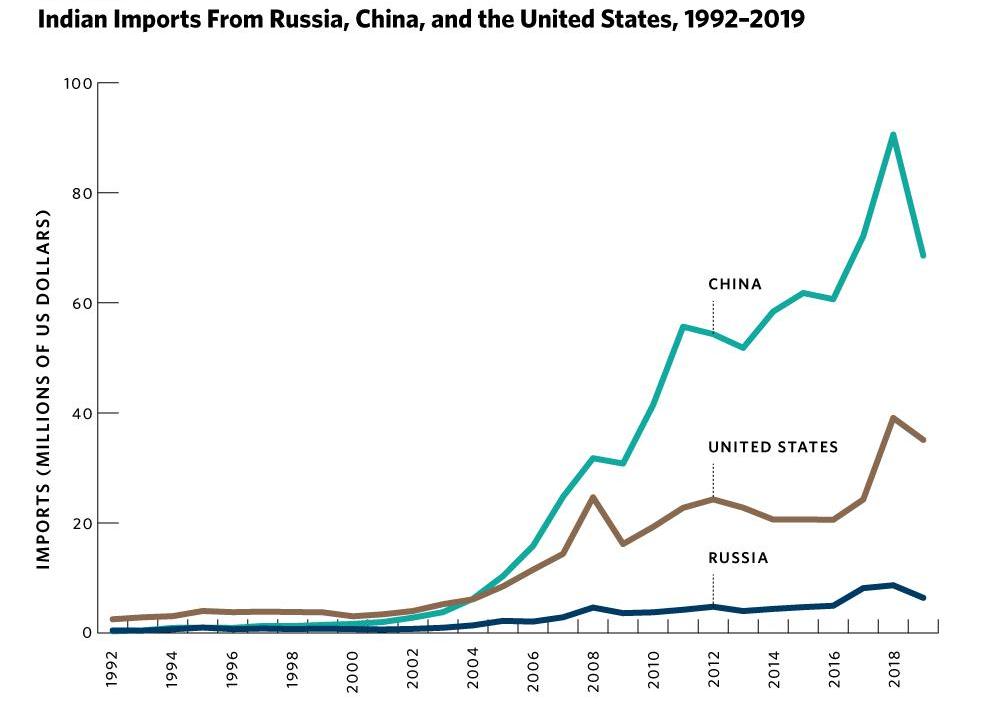
Introduction
India’s Foreign Minister’s recent visit to Moscow holds great importance for the India-Russia relations, going beyond the well-established special and privileged alliance. A high degree of political participation on bilateral and international problems is anticipated given the dynamic global geopolitical scene.
Why the India-Russia Relations Strategically Significant?
- Time-Tested Partners
- Cooperation since the Cold War: India, one of the “developing” countries and a leader of the Non-Aligned Movement, worked closely with the Soviet Union, which, as a superpower, occupied a central role in the relationship throughout the Cold War.
- The 1971 Indo-Soviet Friendship Treaty: Following the Indo-Pak War (1971), China and the US backed Pakistan, while Russia backed India. Declaration on the India-Russia Strategic Partnership: October 2000 saw a significant change in India-Russian relations, with increased levels of collaboration in practically every aspect of the two countries’ relationship.
- Special and Privileged Strategic Partnership: The Strategic Partnership was upgraded to a “Special and Privileged Strategic Partnership” during the Russian President’s visit to India in December 2010.
- Energy Security
- Russia has one of the world’s largest natural gas reserves, and India has started the process of becoming more dependent on natural gas. The country actively imports hydrocarbons from the Russian Far East.
- Russia is a significant partner for India when it comes to the peaceful use of nuclear energy; the Kudankulam Nuclear Power Plant (KKNPP) is being constructed in Tamil Nadu with Russian technical assistance.
- Economic Convergence
- India’s seventh-largest commercial partner is Russia.
- The goal of USD 30 billion in bilateral commerce by 2025 has already been surpassed by the current level of trade, which is USD 45 billion.
- By 2025, the two nations hope to raise their bilateral investment to USD 50 billion.
- Balancing Geopolitics
- Counterbalancing Chinese Aggression: While the Chinese aggressiveness in the eastern Ladakh border areas marked a turning point in India-China relations, it also showed that Russia may play a role in easing tensions with China.
- Proponents of Multipolarism: Russia and India are on board with the idea of a multipolar world. It fits with India’s aspirations for a permanent seat at the UNSC and elevated standing in the international arena, as well as increasing Russia’s aspirations to regain “great power status.”
- Enduring Defence Ties
- The Agreement on the Program for Military-Technical Cooperation, which was signed by the two nations, serves as its guidance. Approximately 47% of India’s overall armaments imports are now controlled by Russia.
- Historically, nevertheless, it made up 65% of India’s imports of armaments.
- The T-72 and T-90S Russian tanks, together with the MiG-21, Su-30, and MiG-29 types that make up its ground attack aircraft fleet, make up the vast bulk of India’s armored forces.
- Russia and India worked together to create the BrahMos missile.
- India and Russia agreed to a 5.43 billion USD contract for the S-400 Triumf missile in October 2018.
- The Soviet Union designed more than half of India’s conventional submarines.

What are the Key Issues in India-Russia Relations?
Strategic Crossroads for Russia:
- Russia’s Closer Ties with China
- With its lengthy border with China and tense ties to the West, Russia must take great care to prevent a two-front conflict.
- Russia and China are introducing a geopolitical dynamic that might affect India’s conventional strategic concerns as they deepen their military cooperation, collaborate on cooperative economic efforts, and coordinate on many diplomatic fronts.
- Increasing Proximity with Pakistan
- Russia has worked to strengthen ties with Pakistan in recent years. That might be a reaction to the US-Indian alliance.
Diplomatic Dilemma for India:
- Security Engagement with the United States
- India and the USA have now signed each of the four basic accords. In the past twenty years, India has purchased weapons valued at USD 20 billion.
- India is faced with a choice between its “special and privileged partnership” with Russia and its “comprehensive global strategic partnership” with the US because of its great power calculations.
- Ukraine Crisis
- Due to the widespread perception that Russia’s actions violated international law and the territorial integrity of a sovereign nation, sanctions were imposed globally in response to its invasion of Ukraine.
- However, India came under heavy fire from the West for continuing to expand its economic and energy ties with Moscow and for not denouncing Russia’s invasion of Ukraine.
Declining Economic Engagement:
- Declining Defense Imports: Due to Russia’s aim to diversify its defense imports and, therefore, increased competition with other suppliers, there has been a progressive reduction in India’s purchases from Russia.
- Poor Post-Sale Services: India expresses dissatisfaction with Russia’s provision of maintenance and after-sale services.

What Should the Way Forward?
Balancing the Defense Dynamics :
- Strengthen Defense Cooperation: Maintain the strategic defense alliance while concentrating on upgrading and expanding the defense cooperation.
- Joint Military Production: The two nations have been talking about how they may work together to use India as a production base for selling services and equipment with Russian provenance to other nations.
Facilitating Economic Engagement :
- Diversification of Economic Relations: The two nations ought to concentrate on broadening and changing their economic ties. This entails looking into new industries for partnerships, boosting trade volumes, and promoting investments.
- Trade facilitation: Both nations have to make an effort to lower trade obstacles and streamline trade procedures. Improve economic cooperation by establishing an atmosphere that makes it easy for companies to do business in both nations.
- Rupee-Ruble Mechanism: To protect bilateral commerce from the effects of Western sanctions, both parties must use the Rupee-Ruble mechanism.
Balancing the Global Dynamics :
- Multilateral Engagement: Work closely together in forums that are multilateral, including the SCO and BRICS. Cooperate to confront similar concerns on the world scene, promote values and beliefs that are shared, and collaborate on global issues.
- Institutional Mechanisms: Make institutional channels for consistent communication and cooperation stronger. This entails developing new forums for collaboration at all levels, from government officials to corporate leaders, and improving the efficacy of current agreements.
Forging Technological Cooperation :
- Innovation and Technology Cooperation: Encourage cooperation in cutting-edge fields such as renewable energy, cybersecurity, artificial intelligence, and space exploration. Collaborative R&D projects can result in technical breakthroughs that are advantageous to both nations.
- Energy Security: Look into the potential for collaboration in the energy field, such as collaborative ventures for the development of energy infrastructure, renewable energy projects, and oil and gas exploration. Concerns over energy security can benefit both parties.
Promoting Cultural Connectivity :
- Yoga and Cultural Diplomacy: Take advantage of Russia’s yoga boom to further your cultural diplomacy efforts. Encourage cultural gatherings, language instruction, and exchanges to increase mutual cultural understanding.
- Public diplomacy: Take part in initiatives to raise awareness and foster knowledge of the two nations’ bilateral relationship among their respective populations. Use social media, cultural events, and the media to spread uplifting stories.
Also read: Dollarization and Changes in the Economy
Conclusion
Based on mutual trust and shared interests, India-Russia Relations remain strong in the face of global changes. In light of these circumstances, the future development of India-Russian ties will depend on cultivating adaptability, candid communication, and a common dedication to world peace. The statement made by the Indian Foreign Minister, “Geopolitics and strategic convergence will always keep India-Russia ties on a positive trajectory,” is accurate.
Frequently Asked Questions(FAQs)
What is the objective of India-Russia relations?
Both Russia and India view their shared ancestry as a “special and privileged strategic partnership”. As the US-led unipolar world system is collapsing, Russia and India have a common goal of establishing a multipolar world order, with each country acting as one pole.
What is the strategic partnership between Russia and India?
In December 2021, the most important summit was held in New Delhi. Despite Moscow’s invasion of Ukraine, relations between India and Russia remained close. As per its stance, conversation and diplomacy are the only ways to settle the problem, India has not yet denounced Russia’s invasion of Ukraine.
What is Russia’s big offer to India?
Russia was India’s fourth-largest oil supplier before the conflict in Ukraine started, after Saudi Arabia, the United Arab Emirates, and Iraq. However, Russia gave significant discounts on oil, up to $30 per barrel, following the conflict and US-led sanctions against the country.
What are India’s diplomatic relations with Russia?India has long regarded Russia as a reliable and trustworthy ally. India’s foreign policy has been largely supported by the growth of relations with Russia. At the time of the Russian President’s visit in October 2000, the “Declaration on the India-Russia Strategic Partnership” was signed by Mr.
Sources:
- Tracing the strategic dimensions of India-Russia relations – Hindustan Times
- Strategic partnership between Russia and India continues to develop dynamically: Vladimir Putin | India News – Times of India (indiatimes.com)
- Jaishankar says relationship between India and Russia much deeper – The Hindu
- Indo-Russia ties: India-Russia relations reflect geopolitical realities, strategic convergence and mutual benefit: Jaishankar – The Economic Times (indiatimes.com)
- Geopolitics, strategic convergence to keep India-Russia ties on a positive trajectory: Jaishankar – India Today
- India-Russia-Relation-2022.pdf (mea.gov.in)
- India–Russia relations – Wikipedia
